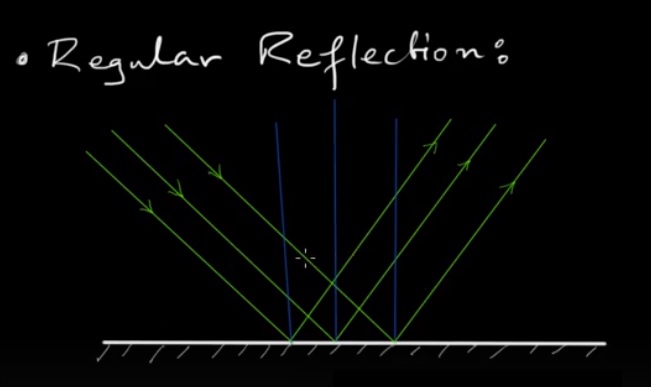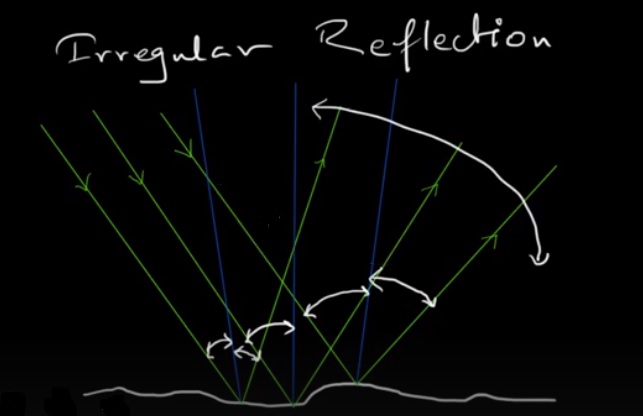Reflection is a fascinating phenomenon that occurs when light interacts with surfaces. When light encounters a surface, it can undergo either regular reflection or irregular reflection.
Regular Reflection:

Regular reflection, also known as specular reflection, occurs when light reflects off a smooth and polished surface, such as a mirror or calm water. In regular reflection, the incident light rays are parallel, and the reflected rays maintain their parallel arrangement. The laws of reflection apply precisely in regular reflection.
Laws of Reflection in Regular Reflection:
The Incident Angle: The angle of incidence, which is the angle between the incident ray and the normal, is equal to the angle of reflection.
Parallel Rays: In regular reflection, the incident rays are parallel to each other, and the reflected rays also remain parallel.
Regular reflection is characterized by clear and sharp reflections, where the image formed appears undistorted. This type of reflection is commonly observed in mirrors, glass surfaces, and calm bodies of water.
Irregular Reflection:
Irregular reflection, also known as diffuse reflection, occurs when light reflects off a rough or uneven surface. Unlike regular reflection, in irregular reflection, the incident rays strike the surface at various angles, and the reflected rays scatter in different directions. Despite the scattered nature of the reflected rays, the laws of reflection are still followed in irregular reflection.
Laws of Reflection in Irregular Reflection:

The Incident Angle: The angle of incidence is still equal to the angle of reflection, even though the incident and reflected rays are not parallel.
Scattered Rays: In irregular reflection, the reflected rays are scattered in different directions due to the uneven surface. This results in a diffuse reflection with no distinct image formation.
Irregular reflection is commonly observed on surfaces with rough textures, such as walls, paper, or fabric. The scattered nature of the reflected light gives objects their matte appearance.
Reflection can be categorized into regular and irregular reflection, depending on the surface characteristics. Regular reflection occurs on smooth and polished surfaces, while irregular reflection occurs on rough or uneven surfaces. Despite the differences in the arrangement of incident and reflected rays, both types of reflection follow the fundamental laws of reflection. Understanding these concepts helps us appreciate how light interacts with different surfaces in our daily lives. So, the next time you admire your reflection in a mirror or observe the scattered light on a textured surface, you'll have a deeper understanding of regular and irregular reflection and the laws that govern them.